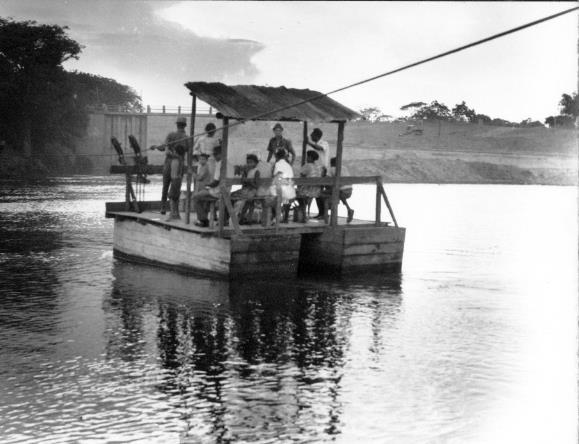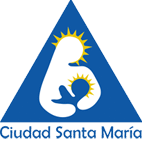Según información histórico, La Otra Banda inicia en el año 1865 como colono de Santiago por invasores buscando terreno para vivir. En 1987, inició una expansión masivo de la ocupación por la construcción del puente Reinoso Peña. Anteriormente, los habitantes utilizaba una barquito para cruzar el río Yáque.
En el año 2010 se estima que los sectores de La Otra banda cuenta con 6,000 casas y 20,000 habitantes.
Comenzando con raíces muy humildes, la comunidad sigue en desarrollo contando con calles asfaltados, electricidad, aqua y otros servicios públicos.
Para ver más detalles, puede leer un escrito de la historia por Lic. Eugenio Perez, más abajo.


Dato Histórico sobre
La Otra Banda y Ciudad Santa Maria (CISAMA)
Geographical aspects of the community of La Otra Banda: is located north of the province of Santiago, located on the banks of Yaque del Norte River. It is bounded on the north by the community of La Joya, south to Barrio Obrero, east by the community of Herradura and west by Altos de Raféy.
According to research done on the history of this prestigious zone, it can be said that the emergence of the community of La Otra Banda dates from the second half of the nineteenth century, specifically in 1865. This land area belonged to the Government and was invaded by the early settlers where Main Street currently lies.
According to the remains found at the scene, in this community two political groups called the Blues and Reds were established. One of those aforementioned groups was established on one side of the Rio Yáque del Norte and the other political group on the other side of the river, that’s where the name of La Otra Banda arises.
In the early stages of the development of this community the settlers only were interested in settling the land but not harvesting from it. There was little agricultural activities. With the passage of time the community was developing and acquiring new development focus and for the year 1938 reached an extraordinary development.
The development of this area begin to be felt after the death of Rafael Leonidas Trujillo, and the disappearance of his dictatorship. Importantly, the real development of this community is obtained in the year 1987 when by order of President Joaquin Balaguer Doctor the construction of the Reinóso Peña bridge over the Rio Yáque River was ordered, as the only means of transportation was that of small boats and this transport killed hundreds of people by drowning. This construction allowed access and communication with other communities and their residents a direct contact with the city.
This situation led to an evolution structure in this sector, since, from the time their main and internal roads, construction of the park Nicolás Vargas, in honor of one of the founders and donating land for people to build their houses were asphalted. At this point, many of the original homes were rebuilt in concrete and thus began the turning point and process of commercial development of the community.
Today, La Otra Banda consists of more than 6,000 homes and an estimated approximately 20,000 inhabitants. Among its sectors are: Villa Liberation, Juan Bosch, San Rafael, La Paz, Los Vargas, Construction and Residential Villa Mirador del Yáque.
La Otra Banda, as a sector with many misfortunes, has gradually progressed since the beginning, has nearly all services required for a decent living: electricity, water, telephone, cable TV, sewer, among others. The other has its illuminated streets (though many are in poor condition), has a community park, police department a play baseball, St. Andrew the Apostle Parish and several chapels, Francisco Arias School and Sr. High School ,Josefina Serrano lower school, a Technical Educational Building: Ramón Edílio Checo, a nursery, a club, with some cultural and sporting groups, several companies and a neighborhood Community Committee that in 2014 the mayor of Santiago formalized to serve this locality.
Significantly, although this community has gradually developed, there are many needs and problems existing in families that shape, including highlights: unemployment, low education (illiteracy, lack of values and principles), crime, drug abuse and family violence etc.
Several renowned and prominent professionals have come from this community including the great painter Santiago Izquierdo and Don Nicolás Vargas and his family, Llavería Family, Family Nunez. Mr. Ramón Edílio Checo and his family, founder of Checo food industry.
As for the religious aspect, it can be considered a community marginally believing in God. One of the highlights in this regard is the arrival of Rev.. Juan Patricio Azcona, who on July 4, 2009, entered this sector to celebrate the Holy Eucharist and thus in the presence of Jesus who sacrificed in the Eucharistic table found this beautiful community in need of mission, therefore sprung a project in which the Church is a host place for those children and young people without a future and values.
Note that at the time this parish was run by the congregation of the Lumen Dei, which later passed to the administration of the diocesan community.
Father Juan with the latent desire of this community project, approached the Checo family to seek their cooperation, thus involving families Alvarez Checo, who decide to support a program to form a comprehensive educational project with the roots of Catholic education.
With the City of Santa María (CISAMA) community program, begins a gradual development in regard to appearance: spiritual, educational, and community; since, it has provided the resources required for these children, adolescents and young people to have a decent education and strengthened in security, to forge their desire to be positive leaders in their community.
In 2010, construction began Technical Education Center Ramon Edílio Checo, in which courses are taught various by institutions, such as INFOTEP, PUCMM, etc.
On April 8, 2013, the new grade school building Francisco Arias, begin construction by the Ministry of Education. It has 21 classrooms, two three-story pavilions, children’s room, sports area and the initial level consists of three classrooms, plus the recreation area. Teaching is taught from the 1st grade through 6th grade with three sections each. Comprising a roster of about 700 students.
On September 2, 2013, the Nursery, concludes the construction of 10 classrooms of these are 8 enabled, accommodating 244 children, of which there are 194 children housed; their service staff is trained in the areas of psychology, nursing and teachers who give personalized monitoring children.
The original grade school Sister Josefina Serrano so far works as the premises of technical building contains a list of approximately 270 students. It is expected that the new school year 2015-2016 the new installation for High School will be ready for operation.
In October 2014, the CISAMA Board of Directors was formed with 14 members defining 4 Directorships or axis as follows: 1) Education, 2) Spiritual, 3) Community and Sustainability. It is the mission and vision of this program that within 10 years, the Otra Banda Community will be an example of integral community development with Education and Human Development at it’s core.
Escritor: Eugenio Perez
